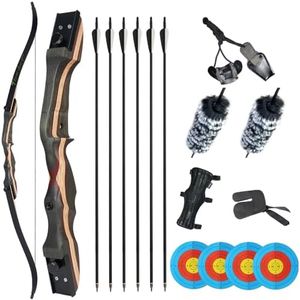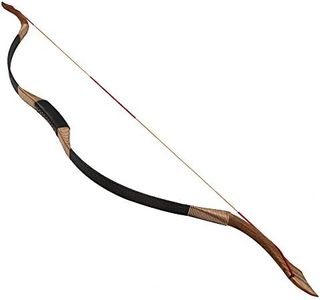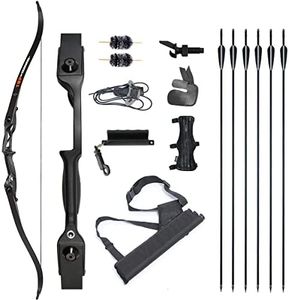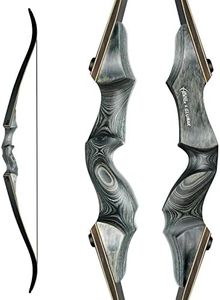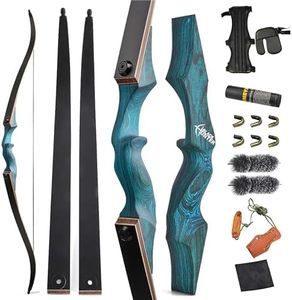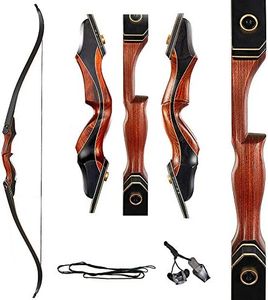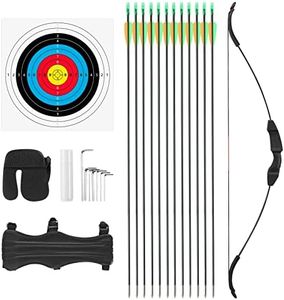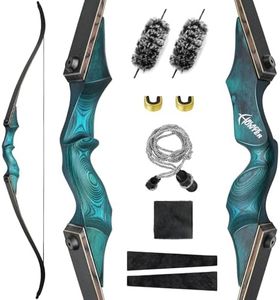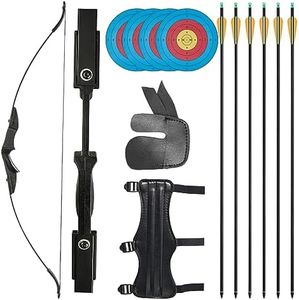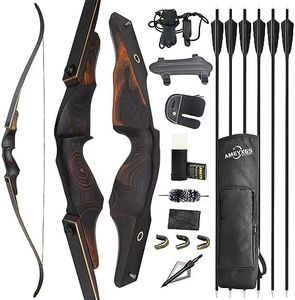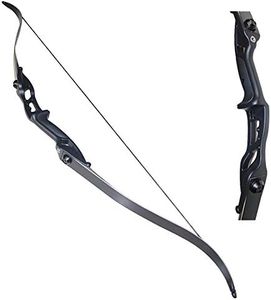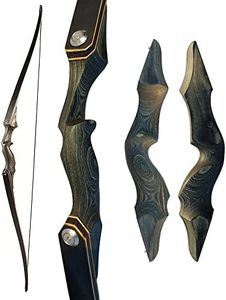We Use CookiesWe use cookies to enhance the security, performance,
functionality and for analytical and promotional activities. By continuing to browse this site you
are agreeing to our privacy policy
10 Best Recurve Hunting Bows
From leading brands and best sellers available on the web.Buying Guide for the Best Recurve Hunting Bows
Choosing a recurve hunting bow is about matching your personal needs, strength, and hunting style to the right specifications. Recurve bows are favored for their simplicity, reliability, and traditional archery feel, but there are several key factors that greatly influence your shooting experience and hunting effectiveness. Focusing on the right specifications can make a huge difference in your comfort, accuracy, and overall success when out in the field. Before deciding, think about how you plan to use the bow, your body size and strength, and your comfort level with handling archery equipment.Draw WeightDraw weight is the amount of force needed to pull the bowstring back to its full draw. It’s important because it affects both the arrow’s speed and penetration, which are critical for hunting. Draw weights generally range from about 25 to 60 pounds. For small game or beginners, lower draw weights are easier to handle and practice with. Higher draw weights, 40 pounds and above, are usually recommended for hunting larger game as they provide enough power for ethical kills. To pick the right draw weight, consider your physical strength and endurance – you want a bow you can draw comfortably and repeatedly without straining, but still powerful enough for your intended targets.
Bow Length (AMO length)Bow length refers to the measurement from one tip of the bow to the other, following the curve of the limbs. This size affects stability, accuracy, and maneuverability. Shorter bows (around 48–58 inches) are easier to handle in tight spaces or dense brush, making them good for hunting in thick woods, but may be less forgiving of shooting errors. Longer bows (60 inches and up) tend to offer greater stability and accuracy, which benefits newer archers or when taking longer shots. You should choose the bow length based on your shooting environment and your preference for either maneuverability or shot stability.
Draw LengthDraw length is how far you pull the bowstring back before releasing an arrow, usually measured in inches. This measurement is important for both comfort and consistency, as using the wrong draw length can reduce accuracy and even cause injury. Shorter draw lengths (around 24–27 inches) are typical for people with shorter arms, while longer draw lengths (28–31 inches or more) fit those with longer arms. To find your ideal draw length, measure your arm span (fingertip to fingertip) and divide by 2.5. Picking the right draw length ensures you shoot comfortably and consistently every time.
Riser Material and GripThe riser is the central part of the bow that you hold, and its material determines the bow’s overall feel, weight, and durability. Risers made from wood offer a classic, warm look and feel, while metal or composite risers can be lighter and more resistant to changing weather. The shape and size of the grip also affect shooting comfort and bow control. If possible, try holding different types to see what feels best in your hand, as a comfortable grip helps with accuracy and long shooting sessions.
Limb MaterialBow limbs are responsible for storing and releasing energy as you draw and release the string. Traditionally, limbs are made from layers of wood, but modern limbs often use fiberglass or carbon for added strength and flexibility. Wooden limbs offer a traditional feel, while composite limbs can provide better performance and durability, especially in changing outdoor conditions. The choice depends on whether you value tradition and aesthetics, or want more robust and reliable performance in various weather.
Takedown vs. One-piece DesignA takedown bow can be disassembled into three parts (two limbs and a riser), which makes it much easier to transport and allows you to swap out limbs for different draw weights as your skills grow. One-piece bows are solid and offer a bit more of a classic appearance and feel, but are bulkier to carry. If you travel or hike into your hunting spots, or if you want the flexibility to upgrade your bow over time, a takedown model is a smart choice. If tradition and simplicity are most important, a one-piece may suit you.
